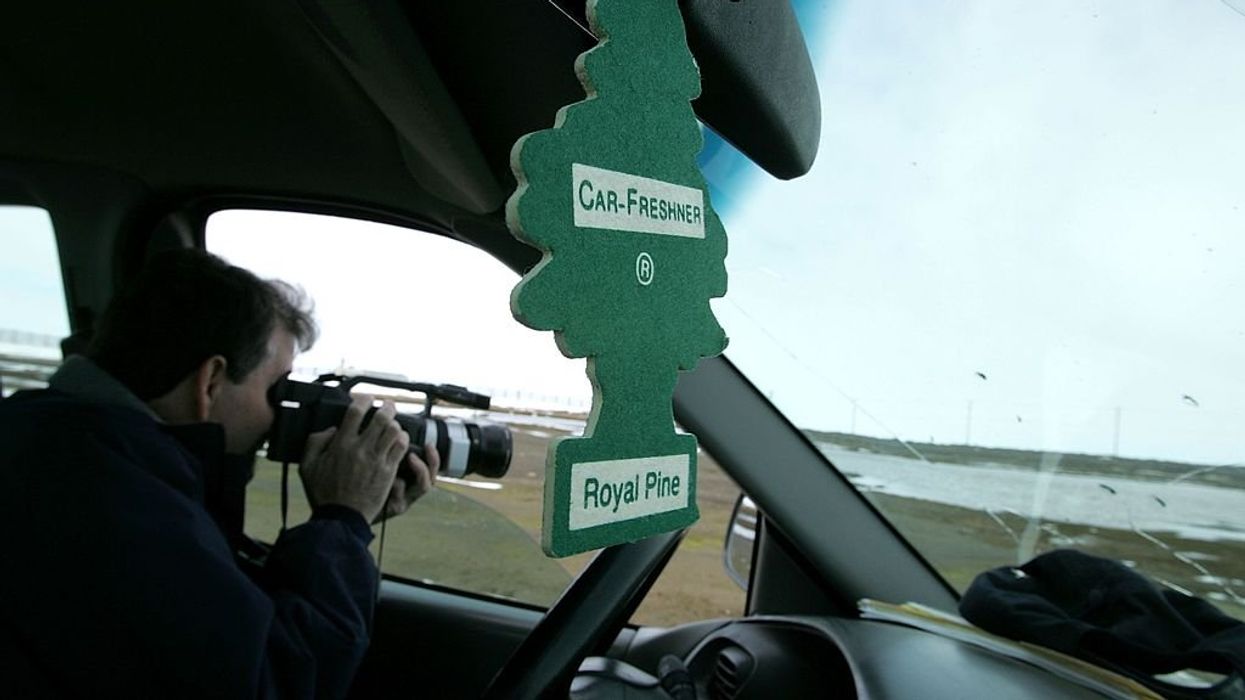
Justin Sullivan/Getty Images

Widely used flame retardant may cause cancer; cracking windows, parking out of sun can help.
Your eco-friendly new car may be subjecting you to a toxic environment — every time you get behind the wheel.
A recent study found that the chemicals used as flame retardants in newer cars can cause brain fog, irritability, hormonal imbalance, and a host of other health issues. Even worse, there have been tests that confirm up to 250 other toxic chemicals inside most cars — even the environmentally friendly electric cars.
'Commuting to work shouldn’t come with a cancer risk, and children shouldn’t breathe in chemicals that can harm their brains on their way to school.'
That means your brand-new electric car (or most cars under four years old) could be poisoning you every time you take a drive.
The study, published May 7 in Environmental Science & Technology, analyzed the cabin air of 101 electric, gas, and hybrid cars across 30 states with a model year between 2015 and 2022.
Researchers found that 99% of the cars contained a flame retardant called TCIPP, which is currently under investigation by the U.S. National Toxicology Program as a potential carcinogen. Additionally, most cars also had two more flame retardants considered carcinogenic: TDCIPP and TCEP.
“Considering the average driver spends about an hour in the car every day, this is a significant public health issue,” said Rebecca Hoehn, lead researcher and toxicology scientist at Duke University, in a release. “It’s particularly concerning for drivers with longer commutes as well as child passengers, who breathe more air pound for pound than adults.”
According to the study, levels of the toxic flame retardants were also higher in the summer as heat increases the release of chemicals from the car materials.
The source of the cancer-causing compounds in the cabin air is seat foam, researchers said. Flame retardants have been added to seat foam to meet requirements set by the National Highway Traffic Safety Administration’s Federal Motor Vehicle Safety Standard 302, which were adopted in the 1970s and have not been updated.
“Firefighters are concerned that flame retardants contribute to their very high cancer rates. Filling products with these harmful chemicals does little to prevent fires for most uses and instead makes the blazes smokier and more toxic for victims and especially for first responders,” Patrick Morrison, director of health, safety, and medicine for the International Association of Fire Fighters, said in a news release. “I urge [the U.S. National Highway Traffic Safety Administration] NHTSA to update their flammability standard to be met without flame retardant chemicals inside vehicles."
Researchers insist that these toxic flame retardants serve no real benefit inside vehicles.
Lydia Jahl, study author and senior scientist at the Green Science Policy Institute, said people may be able to reduce their exposure to the toxic flame retardants by opening their car windows and parking in the shade or in garages.
“But what’s really needed is reducing the amount of flame retardants being added to cars in the first place,” she said. “Commuting to work shouldn’t come with a cancer risk, and children shouldn’t breathe in chemicals that can harm their brains on their way to school.”
What about that new car smell? It comes from a mix of chemicals called volatile organic compounds. These compounds come from the materials used in the car’s interior — things like plastics, adhesives, and fabrics. When a car is fresh off the assembly line, these materials release gases, a process known as off-gassing. It’s these gases that create the distinct new car aroma.
Some of the VOCs include formaldehyde, toluene, and benzene. While they contribute to that fresh car scent, they’re not exactly great for your health in high concentrations. Studies have shown that these chemicals can cause headaches, dizziness, and even respiratory issues for some people. What’s more, Forbes reported earlier this year that today’s “new car smell” contains carcinogens. According to the cited Beijing study, new SUVs had extra-high concentrations of risky chemicals on hot days.
The “good” news is that the concentration of VOCs decreases over time. That strong new car smell will fade as the vehicle ages and as the materials finish off-gassing. In fact, most of the VOCs will significantly drop within a few months.
Automakers are aware of the health concerns and are constantly working to reduce the amount of VOCs in new cars. They use lower-emission materials and better ventilation systems to keep the air inside your vehicle cleaner.
To reduce this toxic exposure, crack those windows to let your car off-gas some of those toxins and look into non-toxic covers to minimize skin contact with the seats and interior surfaces that contain these flame retardants and other toxic chemicals.
People can reduce their exposure to the toxic chemicals by opening their car windows and parking in the shade.
Lauren Fix